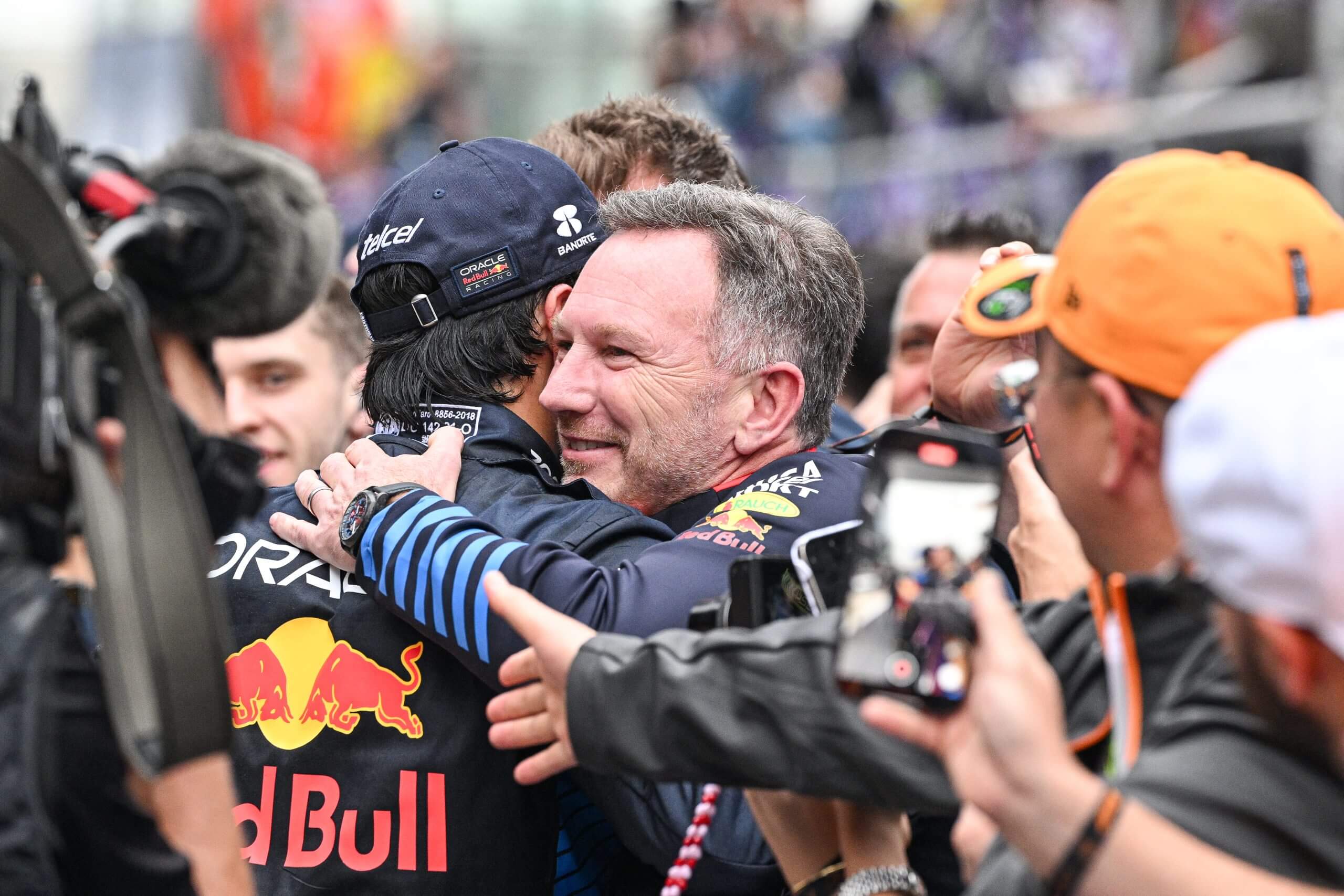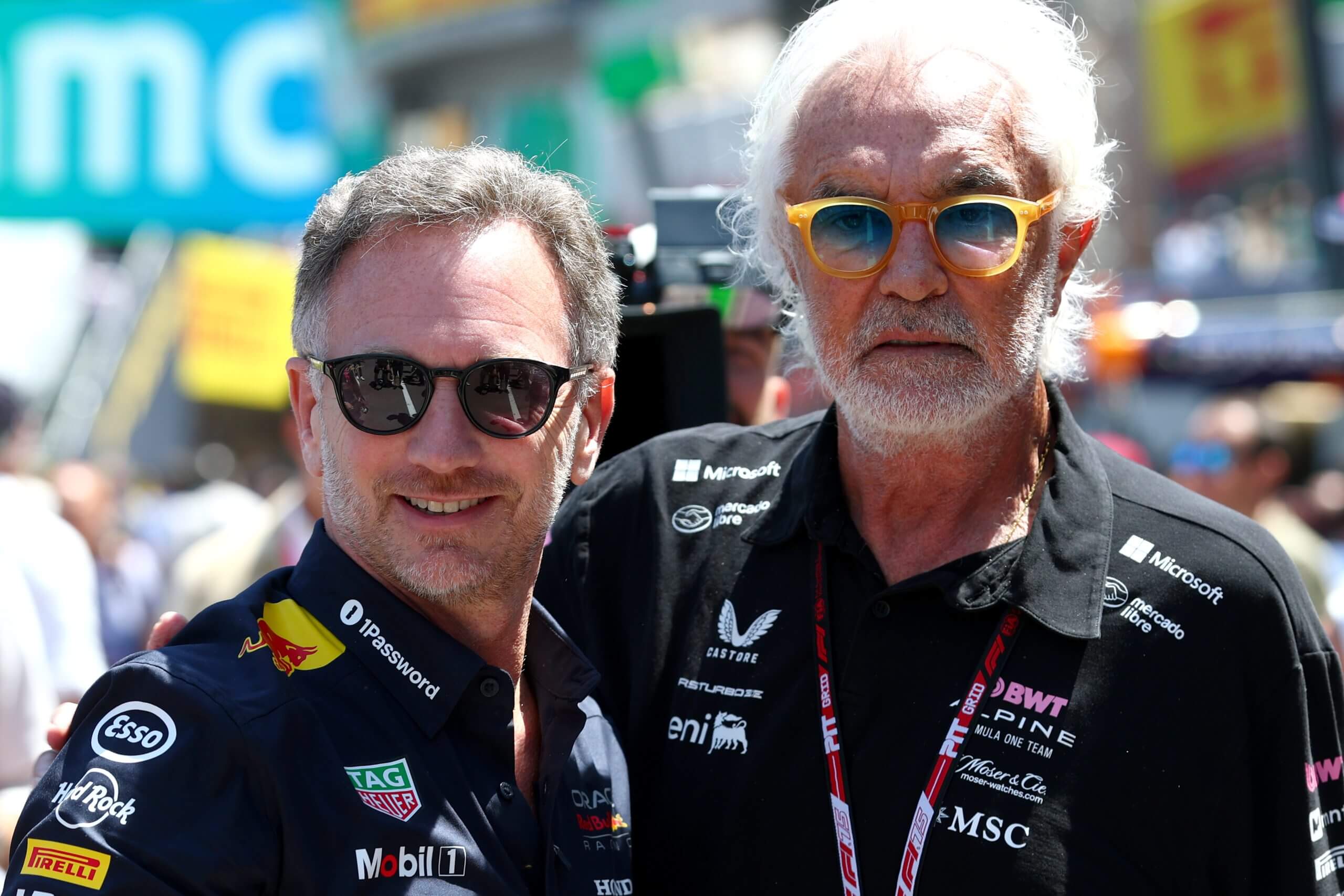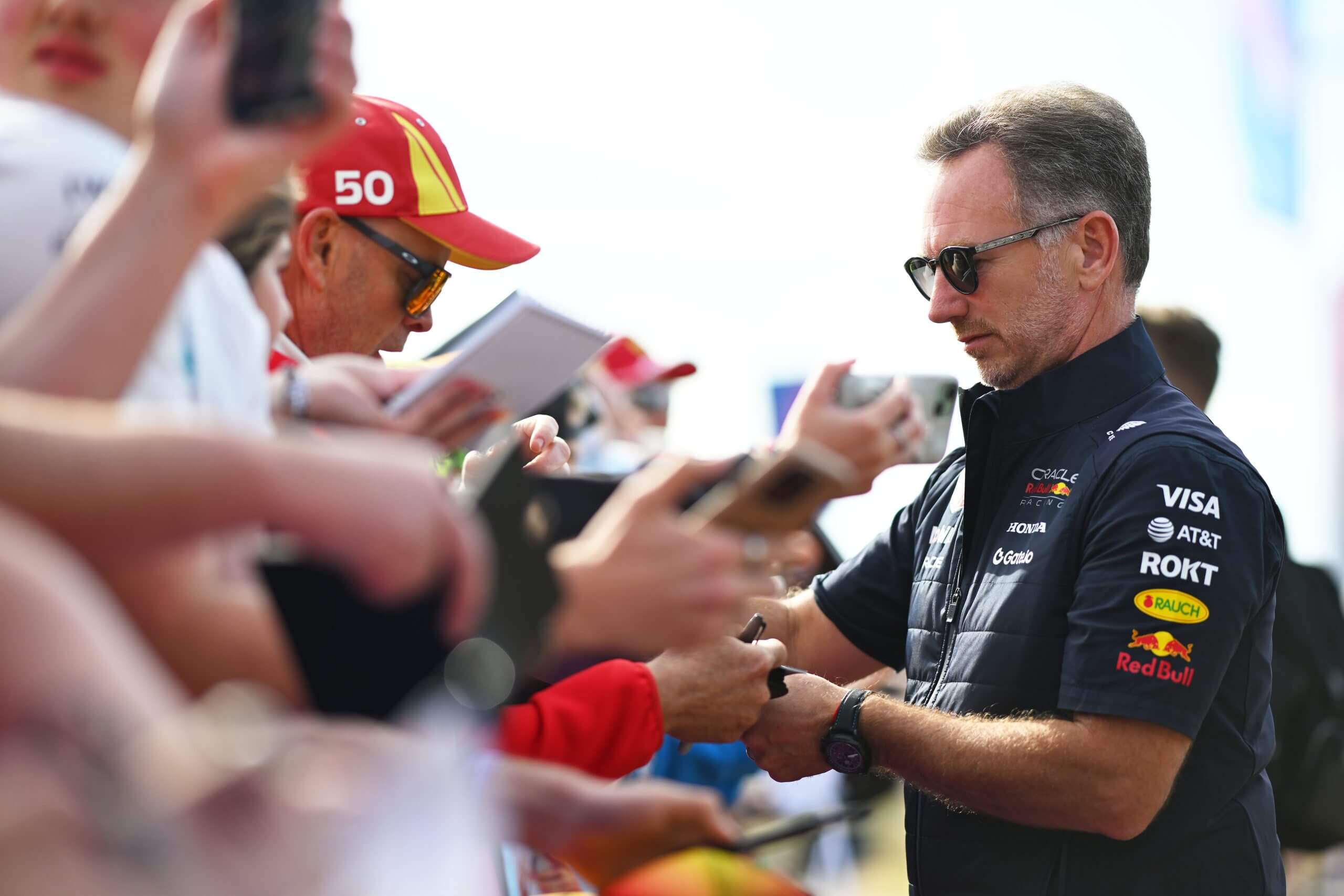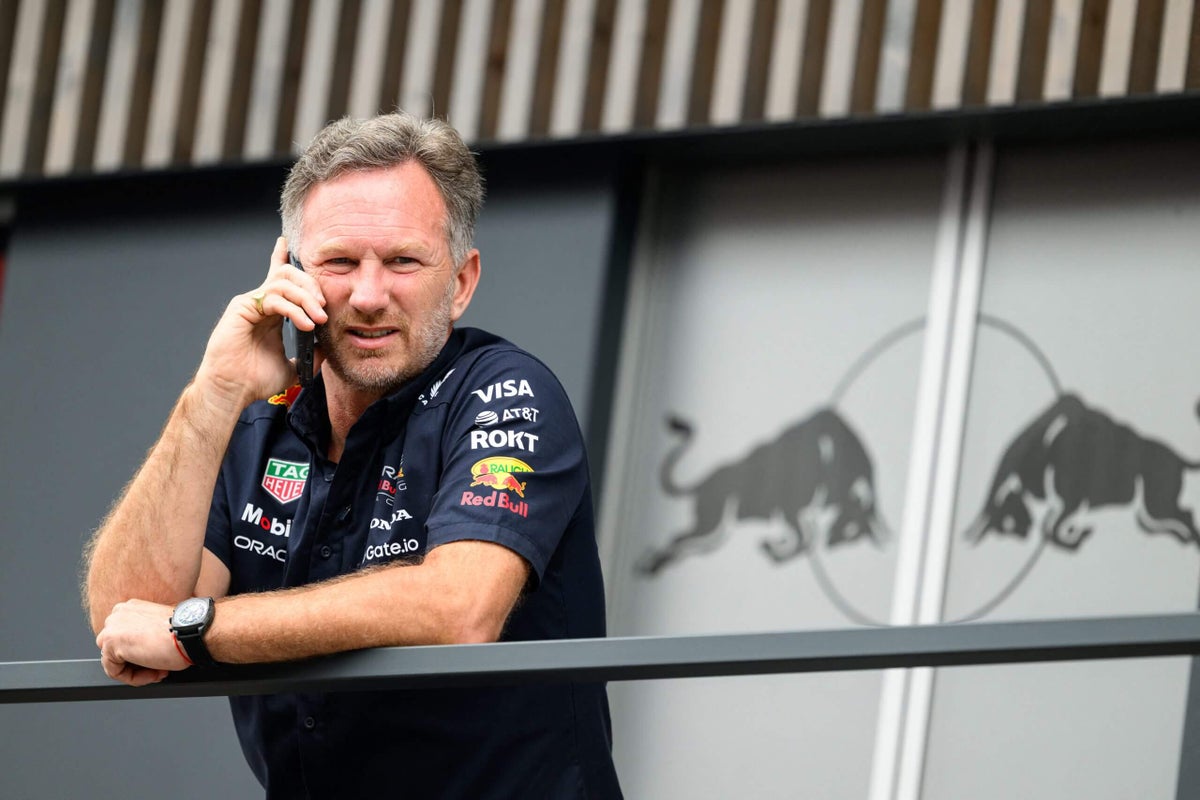Christian Horner’s sacking as Red Bull team principal came as a shock to the Formula One world, just a few days removed from the British Grand Prix in July.
His contract was set to run to the end of the decade, and he’d stood at the helm of that team for more than 20 years, bringing it to levels of success that have gone down in the sport’s record books.
But the team had looked set to end the 2025 season with its worst championship finish for a decade, and such was the car’s struggles that reigning world champion Max Verstappen could only do so much to stay within striking distance of eventual constructors’ champions McLaren.
Horner and Red Bull reached an agreement regarding his contract termination over a week ago, with his buyout estimated to be worth several tens of millions of dollars. But given how prominent a character the Briton has been in the paddock, it’s hard to imagine he’ll stay away for long once his gardening leave expires next spring.
As Mercedes team boss Toto Wolff recently told Reuters: “It’s clear that when someone like that is gone, you’re thinking, he’s got to be back. But this world moves so fast, the hamster-wheel keeps turning. My feeling is probably he’s going to be back, but where and how and when? I don’t know.”
Rumors began swirling in recent weeks about what Horner’s comeback could look like, with the chatter around his potential return during the Singapore Grand Prix race weekend earlier this month particularly telling.
Although he has not spoken publicly since his Red Bull exit, nor attended any grands prix, the 51-year-old remains a major figure within the sport, so here’s a look at the current landscape and why Horner being back in F1 feels inevitable.
Why would Horner want a comeback?
The abrupt end to Horner’s Red Bull tenure meant he left with unfinished business.
Motorsport is all he has known through most of his adult life. He established the Arden team in F1’s feeder series after calling time on his own racing career before, aged 30, becoming the youngest team principal in F1 history when he was put in charge of Red Bull ahead of the 2005 season. Horner did not miss a grand prix through his time in charge, being there for the title-winning highs and the handful of lows.
He could’ve been forgiven for wanting to take a longer, extended break from the sport. Spending time with family has been a priority in recent months, with Horner posting pictures alongside his wife, Geri Halliwell-Horner, on Instagram from their holiday in Scotland and seeing Oasis perform at Wembley, as well as recently adopting two kittens. Not spending every other week on the road has its benefits.
But the hunger still clearly burns within, which is why, three months after being dismissed, foundations appear to be being laid for a return.
At 51, Horner has still got plenty of years to give to the sport. He’s also certain to be missing the paddock after so long at the heart of its various political battles.

Christian Horner celebrates with Sergio Perez after last year’s Shanghai Grand Prix. (Greg Baker / AFP via Getty Images)
Before Horner starts to consider the where and how of a return, defining what he wants to be is the first step — and it’s not to become a team principal again.
Sources, who like all in this article were speaking on condition of anonymity to protect relationships, have indicated to The Athletic that Horner’s conversations and thoughts around a comeback have focused on investment.
At Red Bull, he was a powerful figure — at the helm of the F1 team, the applied technologies division and the engine company. But he was still just an employee. Now, the ambition would be to join an F1 team with a greater role that would include an investment stake, meaning he would be more of a chief executive than a team principal. The Athletic has approached Horner for comment.
Senior figures having stakes in teams is not unheard of. Toto Wolff owns a third of the Mercedes F1 team, as well as serving as its CEO and team principal. When Adrian Newey made his shock move to Aston Martin from Red Bull after 19 years, he took a small shareholding in the team as part of the deal.
While a very wealthy man, especially following his payout from Red Bull, Horner would be unlikely to acquire a stake in a team on his own, given the swelling valuations in recent years. McLaren’s recent stake sale put its valuation at more than $4billion (£3bn), while senior paddock figures estimate even the smallest teams are worth around $2bn.
Any return for Horner would likely require the backing of other investors as part of a potential consortium to acquire a shareholding. This has been a model many high-profile figures have used to get a slice of the F1 pie of late, such as NFL stars Travis Kelce and Patrick Mahomes and Hollywood actors Ryan Reynolds and Rob McElhenney, all of whom have an interest in Alpine through wider investment groups.
Sources have suggested that Horner has held talks with groups about securing the required financial support, giving him confidence he could acquire a stake — even a majority shareholding — should a team be willing to sell.
But he would unlikely want to simply invest and sit on the sidelines. He’s given too much of his life to F1 for that to be a realistic expectation. A hands-on, operational role as part of the senior management of a team, along with the shareholding — not dissimilar to Wolff at Mercedes — would likely be the ideal fit.
What are his potential routes back?
Given that Horner is likely to be looking for a role that’s still relatively hands-on but without being a team principal, the options on the current grid are limited.
Aston Martin team principal Andy Cowell said in Singapore last week that he spoke with team owner Lawrence Stroll, and “it looks as though Christian’s ringing up pretty much every team owner at the moment”. Alpine’s Steve Nielsen and James Vowles of Williams both stated during the same news conference that Horner had not approached their teams about a potential role, to their knowledge.
Haas is the only other team that has confirmed on the record that a conversation has taken place.
Team boss Ayao Komatsu said in Singapore that Horner had “approached” the American outfit and an “exploratory talk” was had with a Haas individual. “And that’s it,” Komatsu told reporters. “Nothing has gone any further.” As far as a possible future at Aston Martin, Cowell said, “I can clearly say there are no plans for involvement of Christian, either in an operational or investment role, in the future.”

Christian Horner and Alpine’s Flavio Briatore on the grid in Monaco in May. (Mark Thompson / Getty Images)
Additionally, there’s a difference between having these conversations and putting concrete plans in place to invest. As Komatsu noted, these have been just exploratory chats. Plus, Nielsen brought up a key point to remember when it comes to seeing or hearing rumbles of Horner potentially having talks with different teams or individuals connected to an F1 team. Given he’s been part of the sport for two decades, it’s inevitable that Horner will keep in touch with long-time acquaintances.
In Singapore, Nielsen said his team principal Flavio Briatore and Horner are “old friends”, adding: “What they’ve talked about, I don’t know. But everything I see and everything I know, there’s no truth in Christian coming to Alpine — but that doesn’t mean it won’t happen. This is Formula One after all.”
What about the possibility of creating his own team? This would not only give Horner full control over a team but also equity, and the regulations of the FIA, world motorsport’s governing body, do permit for up to 12 teams to race in F1.
But this is an expensive path that would require extensive funding and a compelling argument for why F1 should expand the grid again. Cadillac is the first to join the grid since Haas in 2016, and it faced a lengthy road to being approved for its 2026 debut as an 11th team. The operation was technically sound by FIA standards, but it was initially rejected by F1 for a 2025 or 2026 entry when the bid was led by Andretti Global. Only once it became a fully General Motors-backed bid did it clear Formula One Management’s (FOM) bar.
Part of the obstacle to expansion is how the new team is being additive to the grid, such as General Motors joining F1 and creating its own power unit in the coming years, and the fact that there is a reduction of prize money for all of the teams. That second element is when an anti-dilution fee, paid by the new arrival to the others on the grid, comes into play, to minimize the financial impact to an extent.
Horner would need a big, compelling component that would make it hard for FOM to say no if he chose to launch a bid to lengthen the grid again, such as an eye-catching engine manufacturer.
Is Horner’s return inevitable?
Bringing Horner into the fold would immediately lead to a boost in profile around the team that does it. It’s a pull that would appeal to many of them, especially those further down the grid.
There is also the experience gained through his time at Red Bull, where he helped build the team from being sold by Ford for £1 ($1.33 at current conversion rates) in 2004 into one capable of dominating F1 through the early 2010s with four straight titles for Sebastian Vettel and, more recently, enjoying record-breaking success with another four-in-a-row champion in Verstappen. Horner helped morph a midfield team into one capable of fighting — and beating — heavyweights such as Ferrari, McLaren and Mercedes.
Red Bull also became one of the sport’s most successful teams commercially under Horner, bringing in big-name partners such as Oracle, as well as linking up with Ford to collaborate on the new F1 engine project. His experience from building Red Bull into what it became, both on and off the track, would surely make him stand out to any team wanting to bolster their leadership structures.

Christian Horner signs autographs for fans at the British Grand Prix on July 4, 2025. (Rudy Carezzevoli / Getty Images)
But Horner has also faced criticism in his time. Zak Brown, McLaren Racing’s CEO, claimed earlier this year that the political battles in the F1 paddock would become “healthier” thanks to Horner’s absence, following long-standing friction between the pair.
Then there is the sudden nature of his dismissal from Red Bull amid a power struggle behind the scenes and a dip in on-track performance over the past year. His exit also came 18 months after an investigation into allegations of inappropriate behavior made by a female employee. The grievance against Horner was dismissed, a decision later upheld on appeal. Horner denied the allegations.
What is clear from all the discourse around Horner is that, for the moment, he is set on making a return to F1 one way or another. He has the experience, the credentials, and, most importantly, the hunger.
If Horner can find the right terms and the right fit, then a comeback would seem inevitable.
But finding that ‘right fit’ at a time when valuations have shot upwards and the desire to sell is low, given F1’s continued upward trajectory, could be the biggest challenge Horner faces in the coming months as he works toward getting back into the sport.

